 Overview
Overview
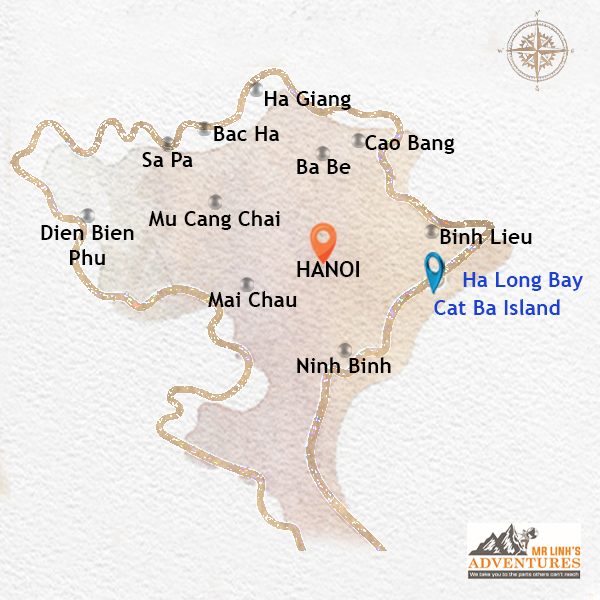 Cat Ba
Cat Ba is much more than just an island. It is a gateway to a world of natural wonders, a place where biodiversity thrives and adventure awaits around every corner. With its national park home to endemic species, its secluded bays, and its picturesque fishing villages, Cat Ba promises an immersive experience in the heart of authentic Vietnam.
 Top Attractions
Top Attractions
Cat Ba is renowned for four unmissable experiences.
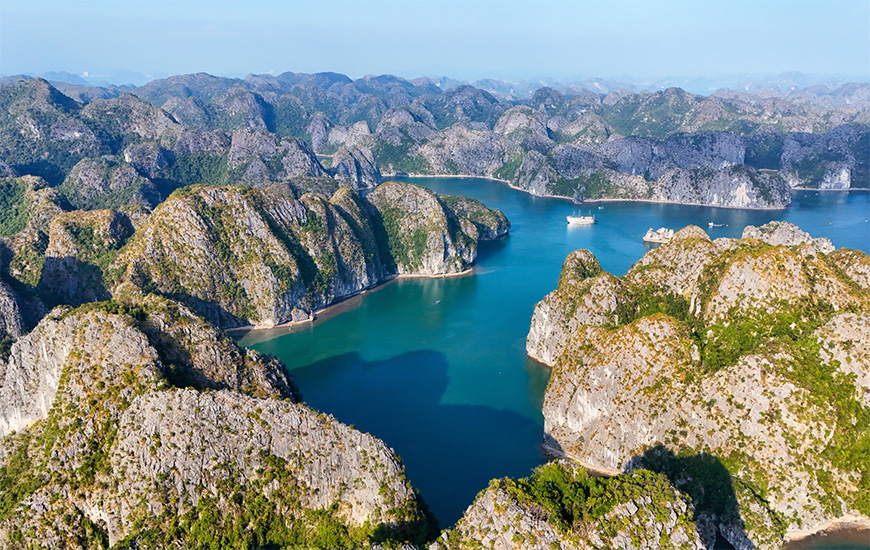
Magical Lan Ha bay - Mr Linh's Adventures
Lan Ha Bay
Often referred to as the little sister of its famous neighbor, Ha Long Bay, Lan Ha offers equally spectacular karst landscapes, but with a more peaceful and less crowded atmosphere. Sailing between the sugarloaf mountains, exploring hidden caves by kayak, and swimming in crystal-clear waters are magical moments.

Cat Ba National Park, a Biosphere Reserve Site - Mr Linh's Adventures
Cat Ba National Park
A true nature sanctuary, the park is home to exceptional flora and fauna, including the Cat Ba langur, an endangered primate species. The hiking trails offer breathtaking panoramic views.
Cat Co Beaches
These three beaches, located near Cat Ba town, offer an idyllic setting for relaxation and swimming. White sand, turquoise waters, and a relaxed atmosphere await.

Traditional floatting villages in Cat Ba - Mr Linh's Adventures
Discovering Fishing Villages
Immerse yourself in local life by visiting the floating fishing villages. An authentic experience to discover the traditional way of life of the region's inhabitants.
 See & Do
See & Do
Cat Ba is a true playground for adventurers, offering a multitude of thrilling experiences.

Kayaking around Cat Ba Island - Mr Linh's Adventures
Imagine paddling a kayak through the emerald waters of Lan Ha Bay, exploring hidden corners and winding through natural tunnels sculpted by time. Suddenly, a secluded beach appears, a haven of peace accessible only by sea.
For thrill-seekers, the limestone cliffs of Cat Ba stand proudly, offering climbing spots suitable for all levels. Once at the top, the reward is well worth the effort: a breathtaking view of the bay, a panorama of striking wild beauty.
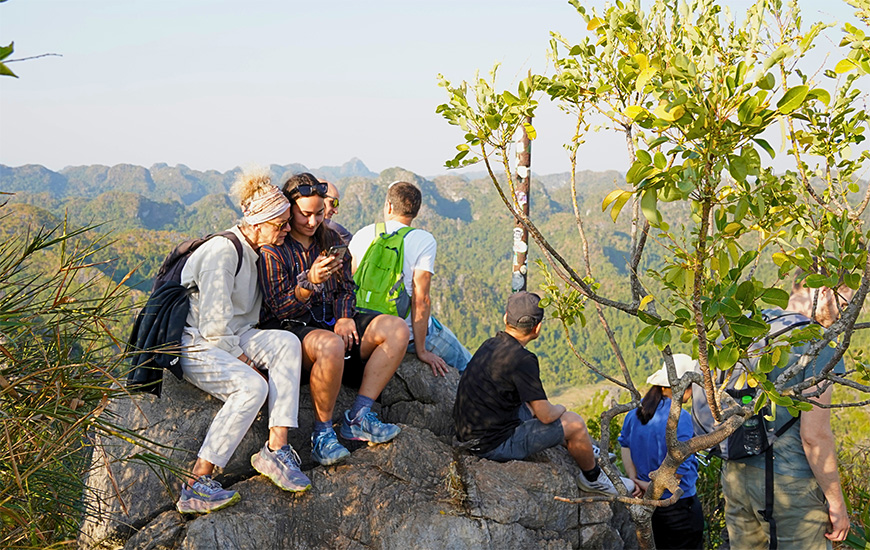
Trekking and hiking in Cat Ba National Park - Mr Linh's Adventures
Nature lovers can immerse themselves in the lush vegetation of the National Park, exploring its trails to encounter exceptional flora and fauna.
Several marked trails allow you to explore its riches, offering varied experiences depending on desires and levels:
Short and Accessible Hikes: For a quick immersion in nature, shorter trails, lasting 2 to 3 hours, allow you to discover emblematic sites such as the frog pond (Ao Ếch) or reach panoramic viewpoints. The Dinh Ngu Lam trail, for example, is a popular option with a breathtaking view from the summit.
Multi-Hour Treks: More experienced hikers can opt for longer treks, lasting up to 8 hours, which cross the heart of the park and offer a more immersive experience. These routes allow you to discover a greater diversity of landscapes and ecosystems. A popular itinerary often combines hiking through the park with a visit to Viet Hai village, offering a perfect combination of nature and culture.
Ascent of Ngu Lam Peak: The ascent of Ngu Lam peak is a must for hiking enthusiasts. Although relatively short (about 3 km), this hike is classified as moderate due to its elevation gain. The effort is amply rewarded by a 360-degree panoramic view of the island, Lan Ha Bay, and the surrounding mountains.
Combination of Hiking and Boat: It is also possible to combine hiking with boat trips to explore more remote parts of the park or to reach Viet Hai village. This option offers a unique perspective on the region and allows you to vary the pleasures.

Discover life on the water in the fishing villages of Cat Ba - Mr Linh's Adventures
For a more contemplative exploration, embark on an unforgettable cruise through the karst landscapes of Lan Ha Bay. Let yourself be lulled by the waves while admiring the spectacular rock formations. This experience also offers opportunities for refreshing swims, new kayaking sessions to explore more distant areas, and authentic encounters with local communities during the discovery of fishing villages.

Relaxing by the Caves of Lan Ha Bay - Mr Linh's Adventures
Finally, for those who wish to explore the marine depths, diving and snorkeling offer an immersive dive into an underwater world rich in biodiversity, revealing the fascinating aquatic life that populates the bay.
 Go Green
Go Green
Mr. Linh's Adventure offers tailor-made tours to discover the Cat Ba region in an authentic and immersive way. Our tours emphasize adventure, discovery, encounters, and sharing, favoring off-the-beaten-path experiences.
 Heritage
Heritage
Cat Ba Island, whose name evokes a legend from the Trần dynasty and roughly translates to "Women's Island," derives its name from a poignant tale. It is said that the bodies of three women, lost at sea, washed ashore on the island's coasts. Discovered by fishermen, they were honored by the erection of temples dedicated to each of them.
However, Cat Ba's history is not limited to this legend. Archaeological remains attest to a human presence dating back approximately six thousand years.
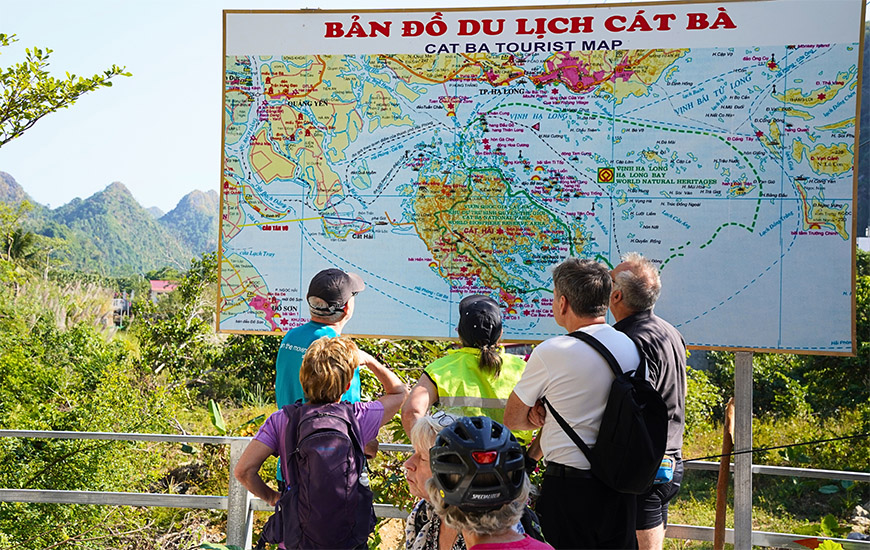
Cat Ba island is off Haiphong - Mr Linh's Adventures
More recently, its strategic position caused the island to suffer the ravages of war, particularly during the French and American conflicts, where it was subjected to heavy bombing. Vestiges of this period, such as the Hospital Cave and Cannon Fort, still bear witness to this troubled past. The Third Indochina War also profoundly marked the island, with the expulsion of nearly 30,000 inhabitants of Chinese origin from the Halong region, a consequence of Sino-Vietnamese tensions.
Update 2024 : Cannon Fort is closed for military purpose
Today, Cat Ba is home to a population of approximately 13,000 inhabitants on the island itself, to which are added some 4,000 souls living in the surrounding fishing villages.
While Cat Ba fascinates with its spectacular landscapes, it would be a shame to overlook its natural and cultural heritage, intimately linked to its exceptional environment.
Cat Ba National Park
A Biodiversity Sanctuary
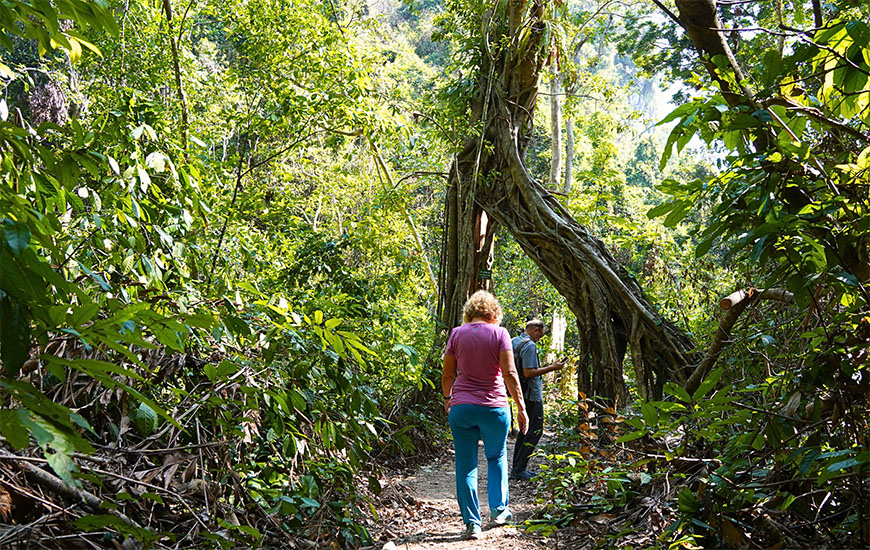
Cat Ba National Park, a paradise for nature lovers - Mr Linh's Adventures
Recently, in September 2023, the Cat Ba archipelago, together with Ha Long Bay, was recognized by UNESCO as a World Natural Heritage Site, a recognition of the exceptional universal value of this ensemble. This inscription underlines the importance of conserving this unique ecosystem. Created in 1986, it covers a vast area of the island, encompassing tropical rainforests, mangroves, lakes, and caves. This park is a true haven of biodiversity, home to exceptional flora and fauna, including some endemic and endangered species, such as the Cat Ba langur, a rare and emblematic primate of the island.
Viet Hai village
An Authentic Village in the Heart of the Island
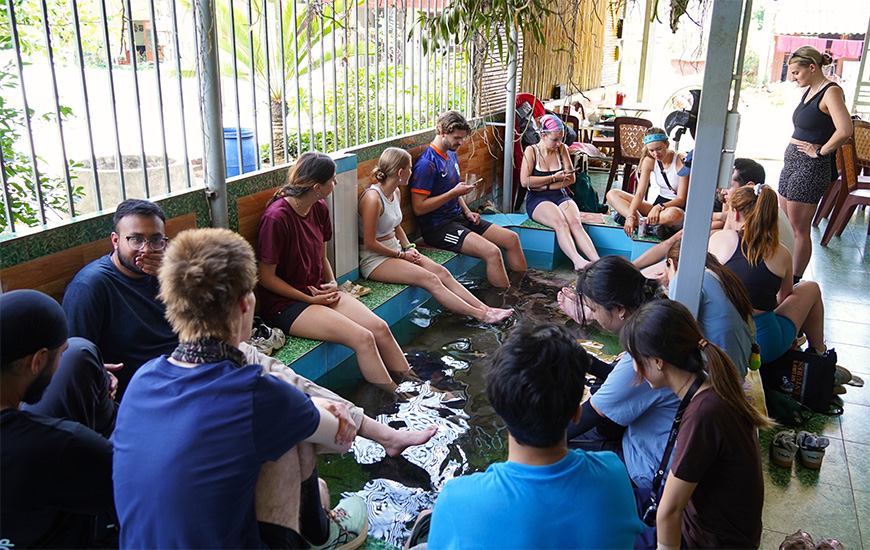
Viet Hai village, a must-see in Cat Ba - Mr Linh's Adventures
For total immersion in local culture, a visit to Viet Hai village is a must. Nestled in the heart of the National Park, this isolated village has preserved its authenticity and traditional way of life. It can be reached by boat or by hiking through the forest, which contributes to its preserved charm.
In Viet Hai, time seems to have stopped. The inhabitants live mainly from agriculture, fishing, and community-based tourism. The traditional bamboo and thatch houses, the green rice paddies, and the warm welcome of the villagers offer an authentic and touching experience. It is an opportunity to discover local customs, share traditional meals, and live to the peaceful rhythm of Vietnamese rural life. Viet Hai offers a unique perspective on Cat Ba's cultural heritage, a living and precious heritage.
The Hospital Cave
A Testimony to History
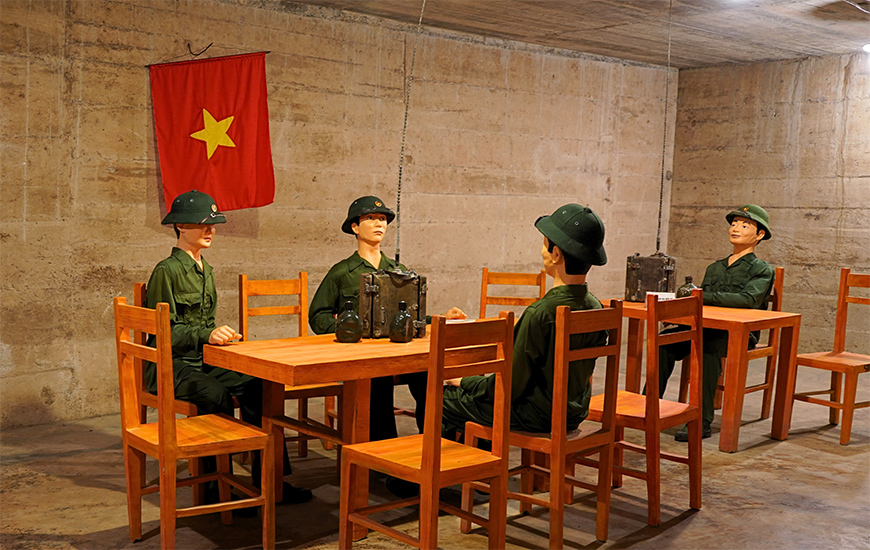
Hospital cave, a worth-visit in Cat Ba - Mr Linh's Adventures
Beyond its natural richness, Cat Ba bears the marks of its history. The Hospital Cave (Hang Quân Y) is a place steeped in history. Used during the Vietnam War as a secret field hospital, this converted cave testifies to the ingenuity and resilience in the face of difficulties. You can still see vestiges of the medical facilities of the time, offering a poignant glimpse into the island's past.
 Food & Drinks
Food & Drinks
Cat Ba Island is a seafood paradise, where the day's catch arrives fresh and vibrant, ready to be enjoyed. Whether you browse the bustling market stalls or settle into a local restaurant, you're guaranteed an unforgettable taste of the sea.

Geoduck, a Cat Ba must-try - Collected
One standout delicacy is the geoduck, or elephant trunk clam, a local treasure prized for its unique flavor and rich nutrients. This intriguing mollusk graces many Cat Ba tables, often steamed and artfully seasoned with aromatic spices.
Shellfish lovers will find themselves spoiled for choice. Cat Ba's waters yield a bounty of crabs, each prepared with local flair. The horseshoe crab, for instance, is a star ingredient in dishes featuring a tangy, spicy sauce. King crab, another favorite, is often paired with fragrant lemongrass and fiery chilies. And, of course, succulent lobsters abound, most often steamed to perfection and served alongside a crisp, refreshing salad.
For the adventurous palate, Cat Ba offers the chance to sample more unusual seafood. Sea snake, a local specialty, is believed to possess potent nutritional and medicinal properties.
Beyond shellfish and unique delicacies, the island boasts an array of delectable fish dishes. Snapper and Gio fish, freshly caught from the surrounding waters, are transformed into culinary masterpieces through steaming, grilling, and frying. The tantalizing aromas of these Vietnamese creations fill the air, promising a truly memorable dining experience.
 Directions
Directions
Location
Cat Ba Island is located in Hai Phong province, northern Vietnam.
How to Get There from Hanoi
Several options are possible: direct bus (about 3-4 hours), train to Hai Phong then ferry to Cat Ba (about 4-5 hours). Prices vary depending on the means of transport and the season, expect between 10 and 20 USD for the journey.
Best Season
The ideal time to visit Cat Ba is from April to October, with hot and sunny weather. July and August can be rainy.
Cat Ba is an exceptional destination for travelers seeking adventure, discovery, and sharing. Come and live an unforgettable experience in the heart of the Gulf of Tonkin with Mr. Linh's Adventure!